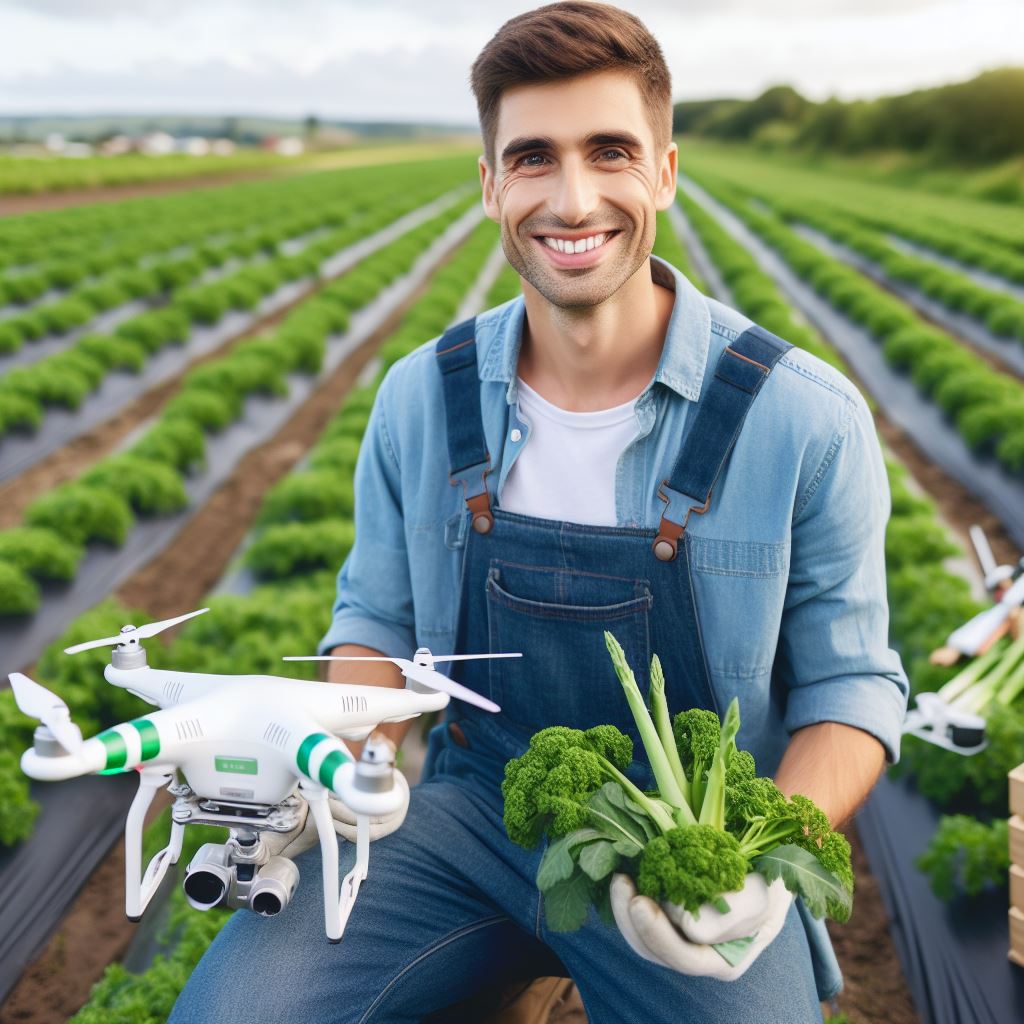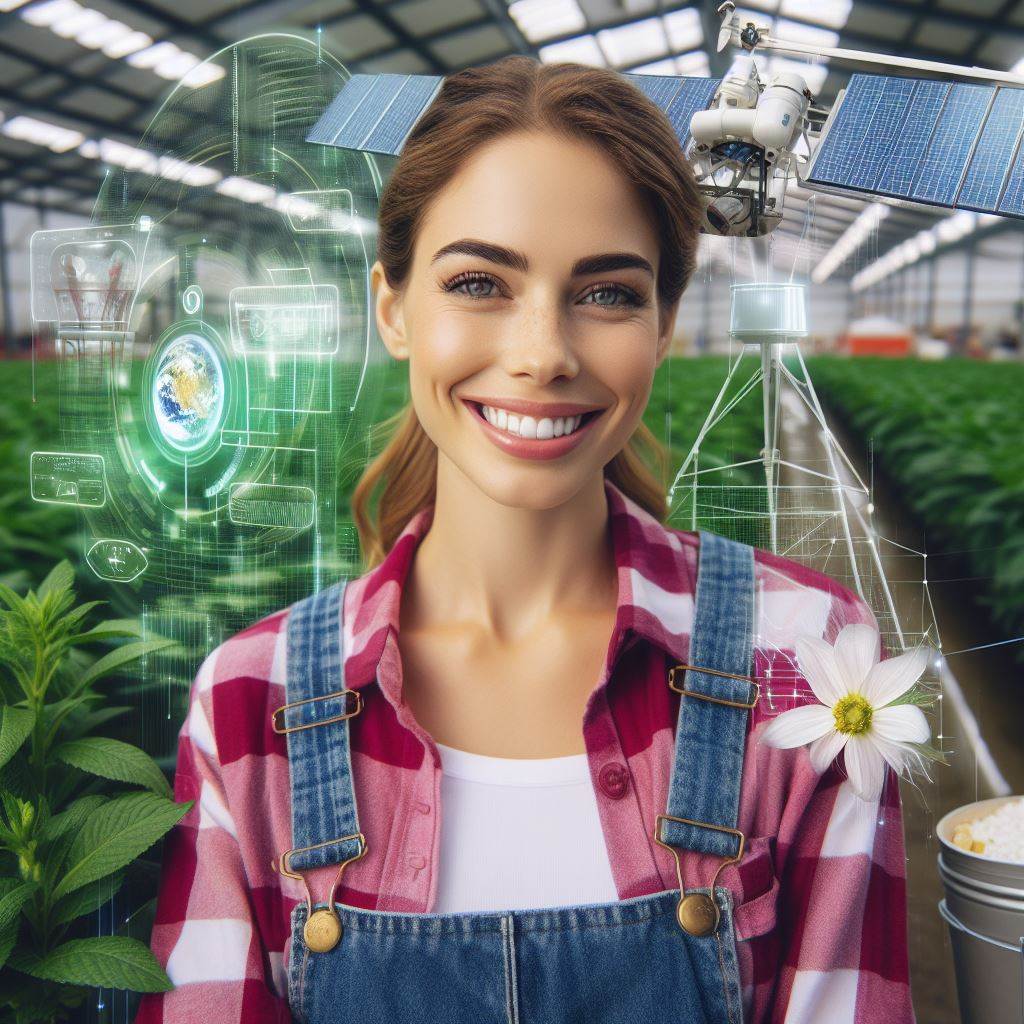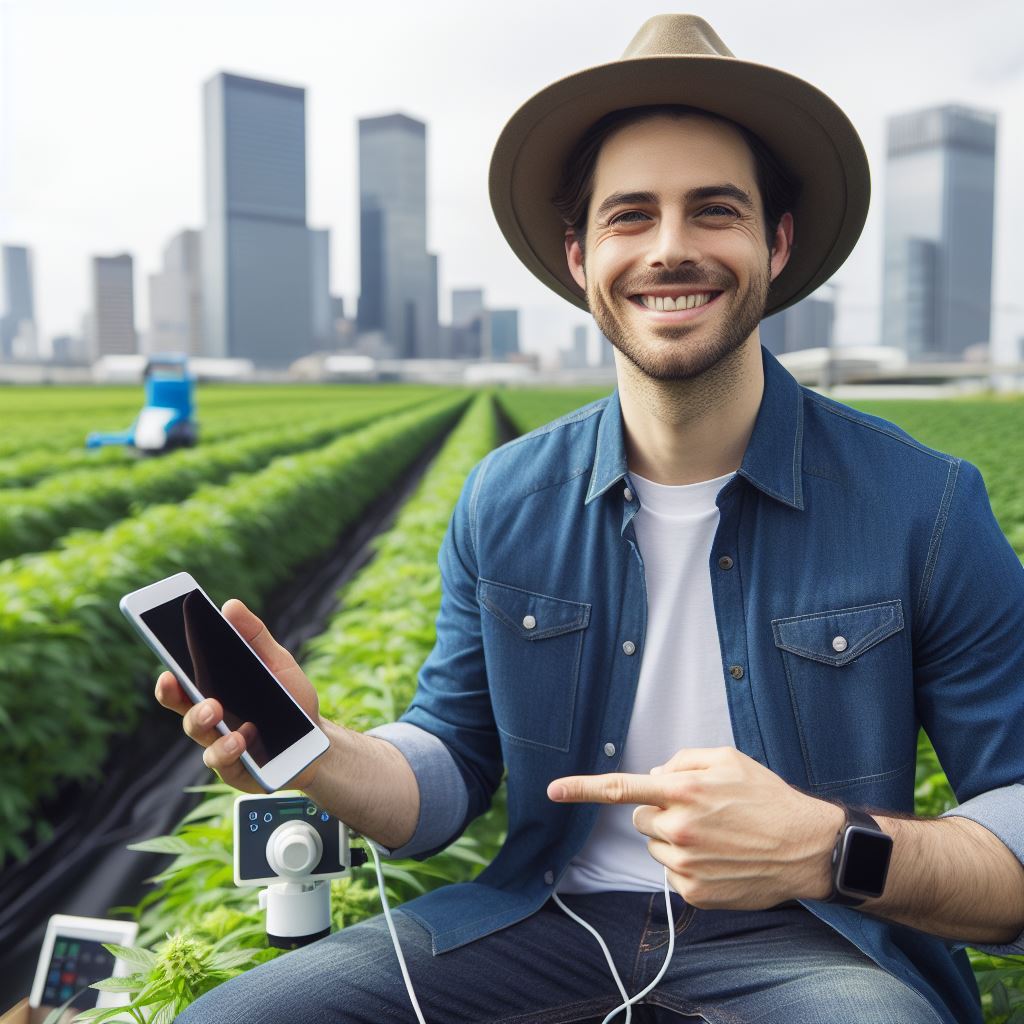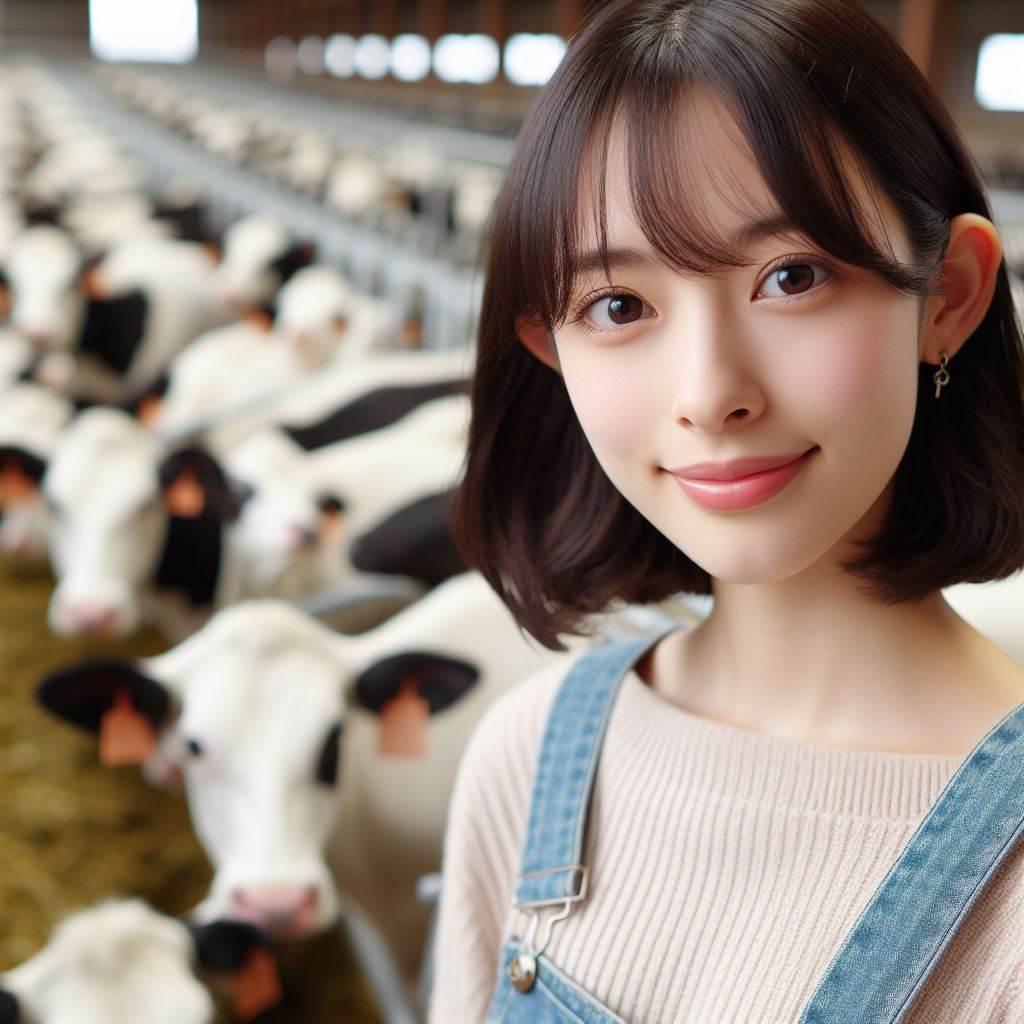Introduction
As we explore “Farmer High Tech Drones in Fields” we will explore the benefits and applications of drones in the fields.
Technology plays a crucial role in modern agriculture, improving efficiency and productivity. One important technological advancement in farming is the use of drones.
These unmanned aerial vehicles have revolutionized the way farmers monitor and manage their fields.
Drones have proven to be a valuable tool for farmers. They provide a bird’s eye view of the fields, allowing farmers to gather important data and make informed decisions.
With the help of cameras and sensors, drones can assess crop health, identify areas of infestation or disease, and even predict yield.
Additionally, drones assist in crop spraying, eliminating the need for manual labor and reducing the use of pesticides.
They can precisely target specific areas, ensuring the effective distribution of fertilizers and herbicides. This not only saves time and effort but also minimizes environmental impact.
Furthermore, drones enable farmers to map their fields accurately. They can create detailed aerial maps that highlight variations in soil fertility and moisture levels.
This information helps farmers optimize irrigation, seeding, and nutrient application, leading to better yield and resource management.
Moreover, drones provide a cost-effective solution for crop monitoring. By quickly surveying large areas, farmers can detect potential issues early on, such as irrigation problems or pest outbreaks.
Real-time data allows for timely interventions, preventing crop loss and maximizing profitability.
Drones have become a farmer’s high-tech ally, enhancing precision farming and agricultural operations.
With their ability to capture data, spray crops, map fields, and monitor plant health, drones offer immense benefits for modern agriculture.
As technology continues to advance, drones will inevitably play an even greater role in shaping the future of farming.
Read: Tractor Tech: A Farmer’s Perspective
Transform Your Agribusiness
Unlock your farm's potential with expert advice tailored to your needs. Get actionable steps that drive real results.
Get StartedHow Drones are Revolutionizing Farming
Farming has always been a labor-intensive and time-consuming process, but thanks to the use of drones, this is rapidly changing.
Drones are proving to be a game-changer for the agricultural industry, offering increased efficiency, productivity, and improved management.
Let’s take a closer look at how drones are revolutionizing farming.
Increased Efficiency and Productivity
- Aerial crop monitoring and surveying: Drones with advanced imaging capture high-resolution images, offering farmers detailed insights into crop health and growth.
- Irrigation and fertilizer management: Drones can help farmers analyze soil moisture levels and apply water and fertilizers precisely, reducing waste and maximizing crop yield.
- Reduction in labor and time: Drones streamline farm operations by automating various tasks, reducing the need for manual labor, and saving valuable time.
Precision Agriculture
- Targeted spraying and pesticide application: They are equipped with spraying systems that can precisely target areas needing pesticides, resulting in reduced chemical usage.
- Weed detection and control: Drones can detect and identify weed-infested areas, allowing farmers to take targeted actions and prevent weed growth without affecting the entire field.
- Soil mapping and analysis: Drones equipped with advanced sensors can create detailed soil maps, enabling farmers to make informed decisions regarding fertilization and crop rotation.
Crop Health Assessment and Disease Detection
- Early identification and proactive measures: Drones identify early signs of crop diseases and nutrient deficiencies, enabling prompt action to prevent disease spread by farmers.
- Reducing crop losses and potential damage: Drones enable precise crop health assessment, identifying areas needing prompt attention, and mitigating crop losses and potential damage.
- Monitoring plant stress levels: Drones with thermal cameras and multispectral sensors detect plant stress from issues like water scarcity or pest infestation, aiding prompt farmer responses.
Enhanced Livestock Management
- Livestock monitoring and tracking: Drones equipped with GPS technology can track and monitor livestock, enabling farmers to ensure their animals’ safety and efficiently manage grazing patterns.
- Pasture and herd management: Drones offer farmers an aerial view of pastures to identify overgrazing or hazards, enabling informed decisions on herd movement.
In short, drones are transforming the agricultural landscape by revolutionizing farming practices.
Their ability to conduct aerial crop monitoring, precision agriculture, crop health assessment, and enhanced livestock management is bringing increased efficiency, productivity, and sustainability to the farming industry.
As technology continues to advance, drones will likely play an even more significant role in shaping the future of agriculture.
Read: Big Data in Small Fields: Our Farm’s Story
Advantages of using drones
Cost-effectiveness
- Using drones reduces the need for manpower, saving labor costs.
- In the long run, operational expenses are lower when drones are utilized.
- Drones help avoid potential human errors, minimizing costly mistakes.
Environmental benefits
- Drones enable precise application of resources, reducing waste and improving efficiency.
- The use of chemicals can be minimized with the targeted application facilitated by drones.
- Drones help in reducing soil erosion by enabling controlled and optimized farming practices.
Safety considerations
- Using drones limits farmers’ exposure to hazardous conditions, protecting their health and safety.
- Drones minimize physical strain on farmers by taking over repetitive or physically demanding tasks.
- The risk of accidents is significantly decreased with the use of drones, enhancing overall farm safety.
Data collection and analysis
- Drones provide high-resolution imagery and efficient data collection, aiding in farm management.
- Integration with other technologies and software allows for comprehensive data analysis and insights.
- Data-driven insights from drones enable farmers to make better-informed decisions and optimize their operations.
Read: Legacy of the Land: An Organic Transformation

Challenges and limitations
Regulatory issues and legal restrictions
- Certification and licensing requirements: Farmers need to meet specific criteria and obtain certifications to operate drones.
- Airspace regulations: Strict rules define where drones can fly, limiting their use in certain areas.
- Privacy concerns: Using drones raises questions about invasion of privacy and data collection.
Weather conditions and flight limitations
- Wind, rain, and extreme temperatures: Adverse weather conditions can affect drone performance and accuracy.
- Restricted flight patterns during certain times: Drones may be prohibited from flying in restricted airspace at certain times.
- Drone maintenance and battery life: Proper maintenance and battery life management are crucial for uninterrupted operation.
Initial investment and affordability
- Costs associated with purchasing drones and related equipment: Acquiring drones and necessary equipment can be expensive for farmers.
- Training and skills development: Farmers need to invest time and resources in learning how to operate drones effectively.
- Return on investment and long-term financial viability: Assessing the economic benefits and sustainability of drone use for farmers.
Read: Smart Farming: One Family’s Tech Transformation
Conclusion
Drones have proven to be a valuable asset in farming, offering numerous benefits and applications.
They have revolutionized the agricultural industry, providing farmers with real-time data and insights for improved efficiency and productivity.
By utilizing drones, farmers can monitor crop health, detect diseases, optimize irrigation and fertilization, and assess overall field conditions.
This enables them to make informed decisions and take proactive measures to ensure the health and success of their crops.
Furthermore, drones have the potential to advance even further in the future.
With ongoing technological advancements, we can expect more sophisticated drones that possess higher-resolution cameras, longer flight times, and greater precision in data capture and analysis.
Integrating drones into the agricultural industry is of utmost importance for enhanced sustainability and profitability.
They help reduce the overuse of pesticides and fertilizers, minimize resource wastage, and promote environmentally friendly farming practices.
Moreover, drones can contribute to the growth of precision agriculture, enabling farmers to implement site-specific management and optimize resource allocation. This not only boosts yields and reduces costs but also reduces the environmental impact of farming.
In closing, drones are a farmer’s high-tech ally, offering a wide range of benefits and applications.
As technology continues to advance, the agricultural industry must embrace and integrate drones for a more sustainable and profitable future.




